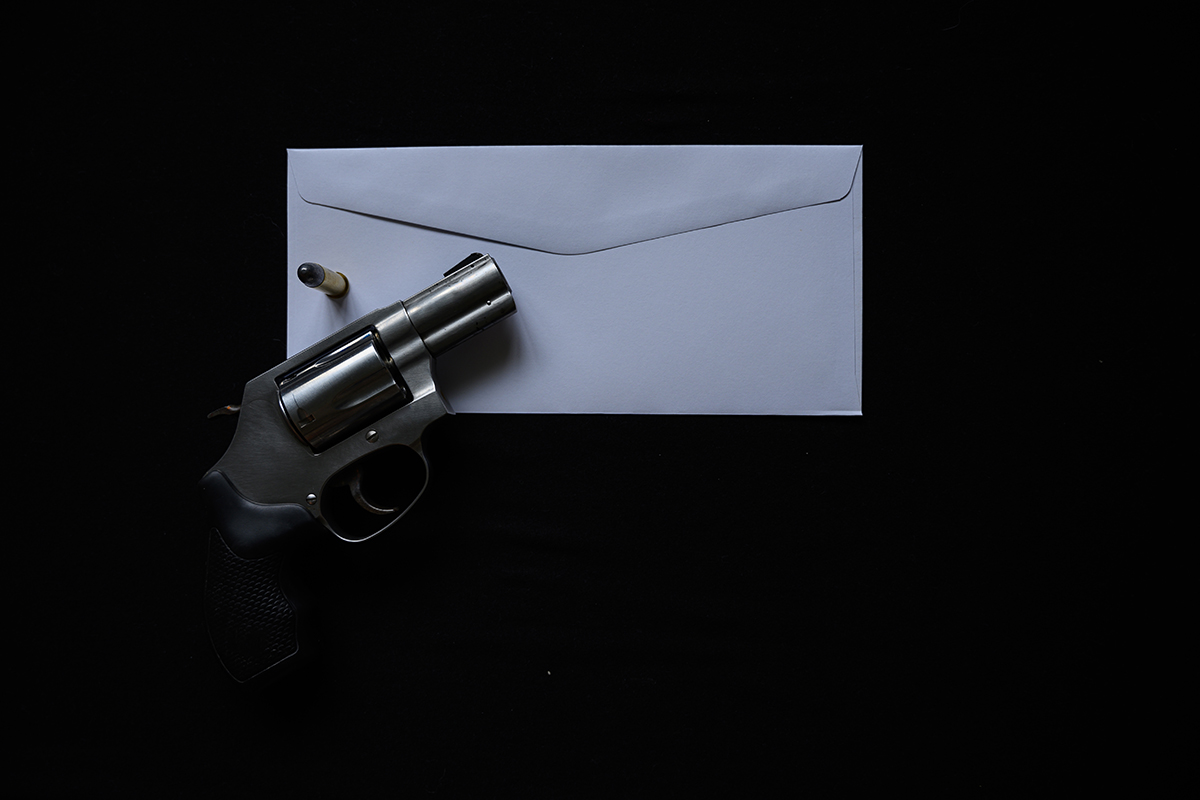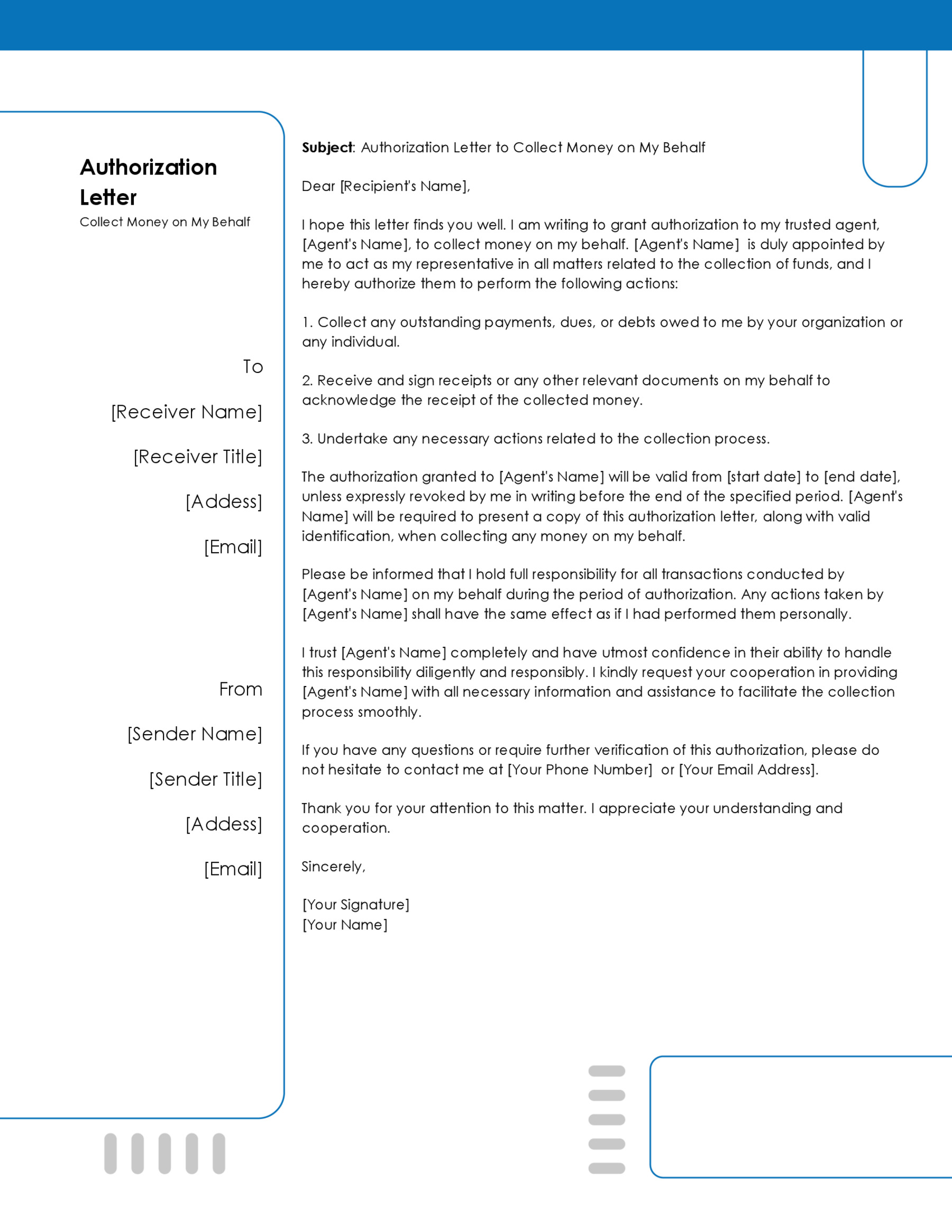Firefighting is a critical service, playing a vital role in ensuring public safety and security. Consequently, employers seek candidates who possess the necessary skills, knowledge, and dedication to perform effectively in this challenging field. Similar to other professions, applying for a firefighter position requires a well-crafted cover letter as part of your application.
It serves as your first introduction to the hiring manager and plays a crucial role in getting your application noticed and thoroughly evaluated. It complements your resume by providing an opportunity to elaborate on your unique qualifications and suitability for the firefighter role, setting you apart from competing candidates. This article aims to guide you in crafting a compelling cover letter and offer additional insights to strengthen your application for a firefighter job.
In addition to discussing the key components of an effective cover letter, we will also explore the importance of showcasing your relevant training, certifications, and experiences to demonstrate your preparedness for the role. Furthermore, we will touch upon the significance of highlighting soft skills such as communication, teamwork, and problem-solving, which are integral to successful firefighting.
Lastly, we will guide tailoring this letter to specific firefighting positions, emphasizing your adaptability and readiness to take on various challenges within the field. By following these guidelines and incorporating the additional information provided, you will be well-equipped to create a standout cover letter that captures the attention of hiring managers and advances your application to the next stage of the hiring process.
Firefighter Cover Letter Templates
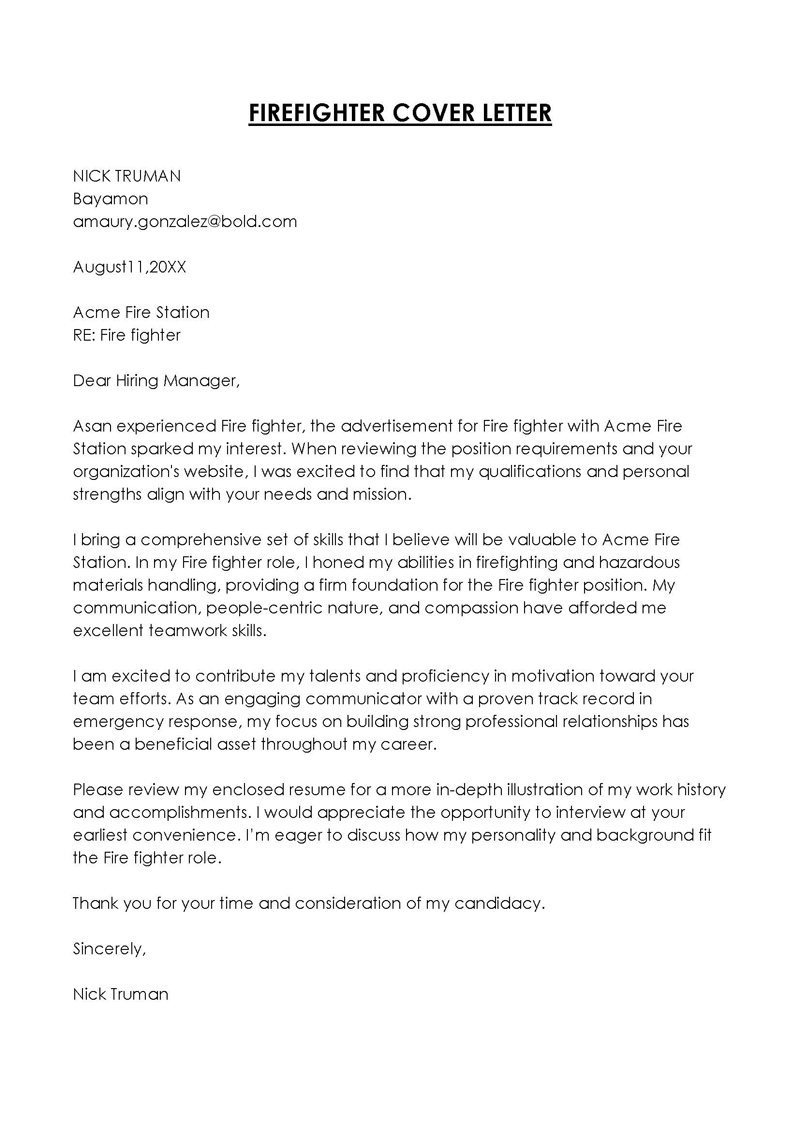
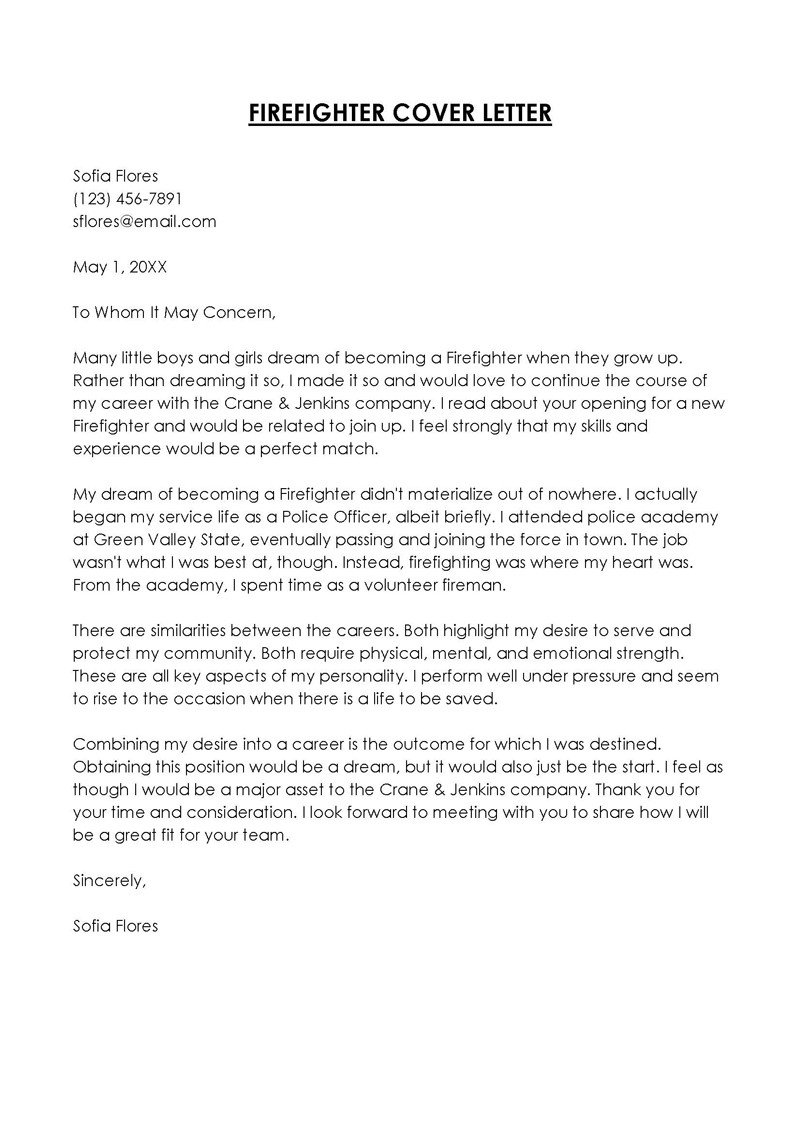
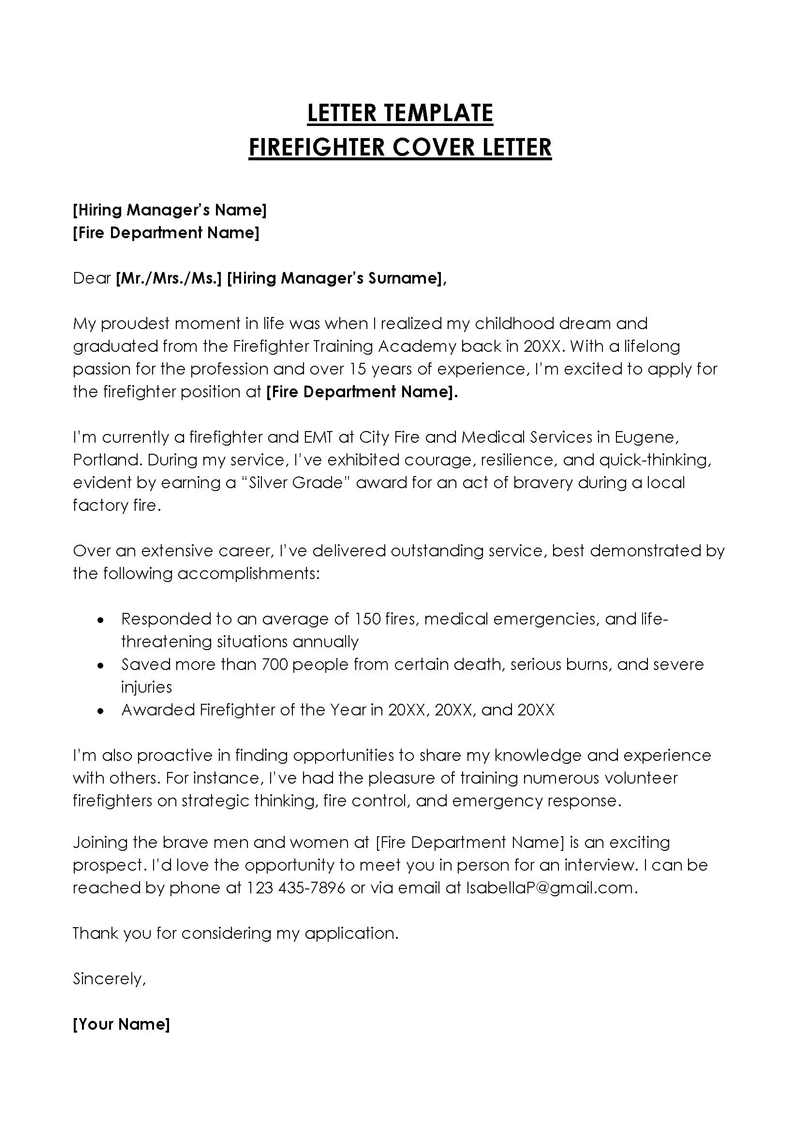
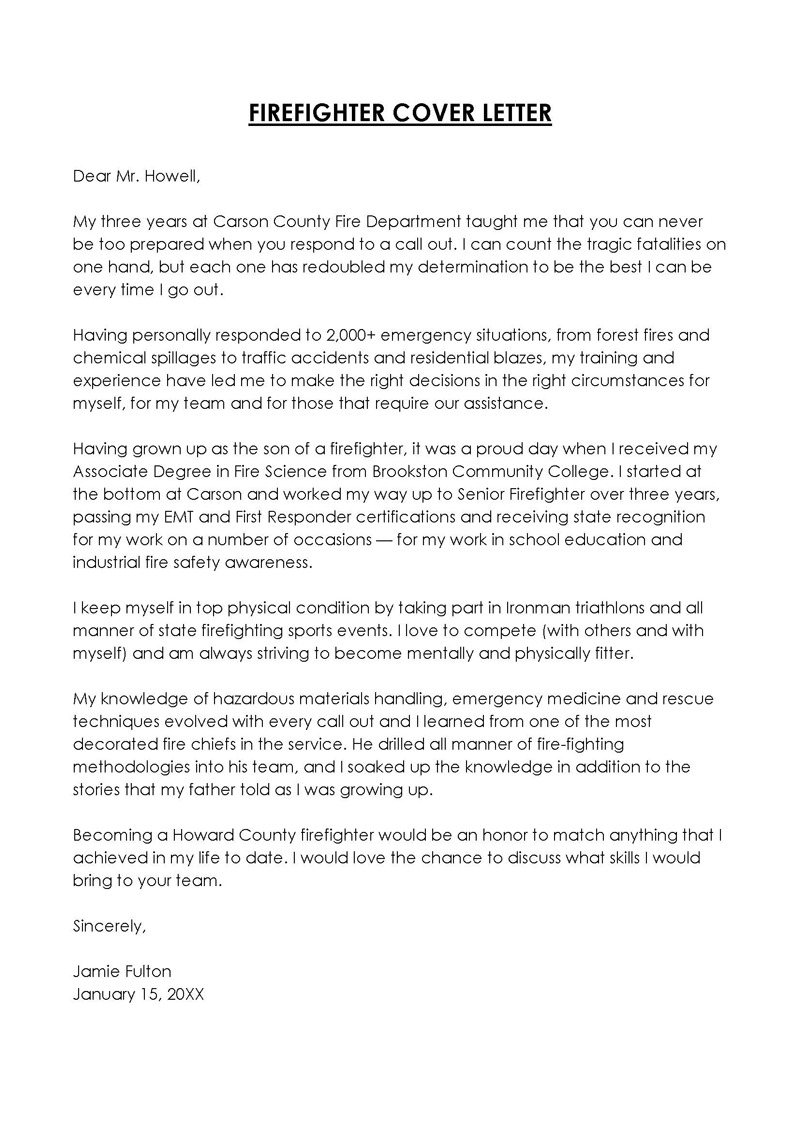
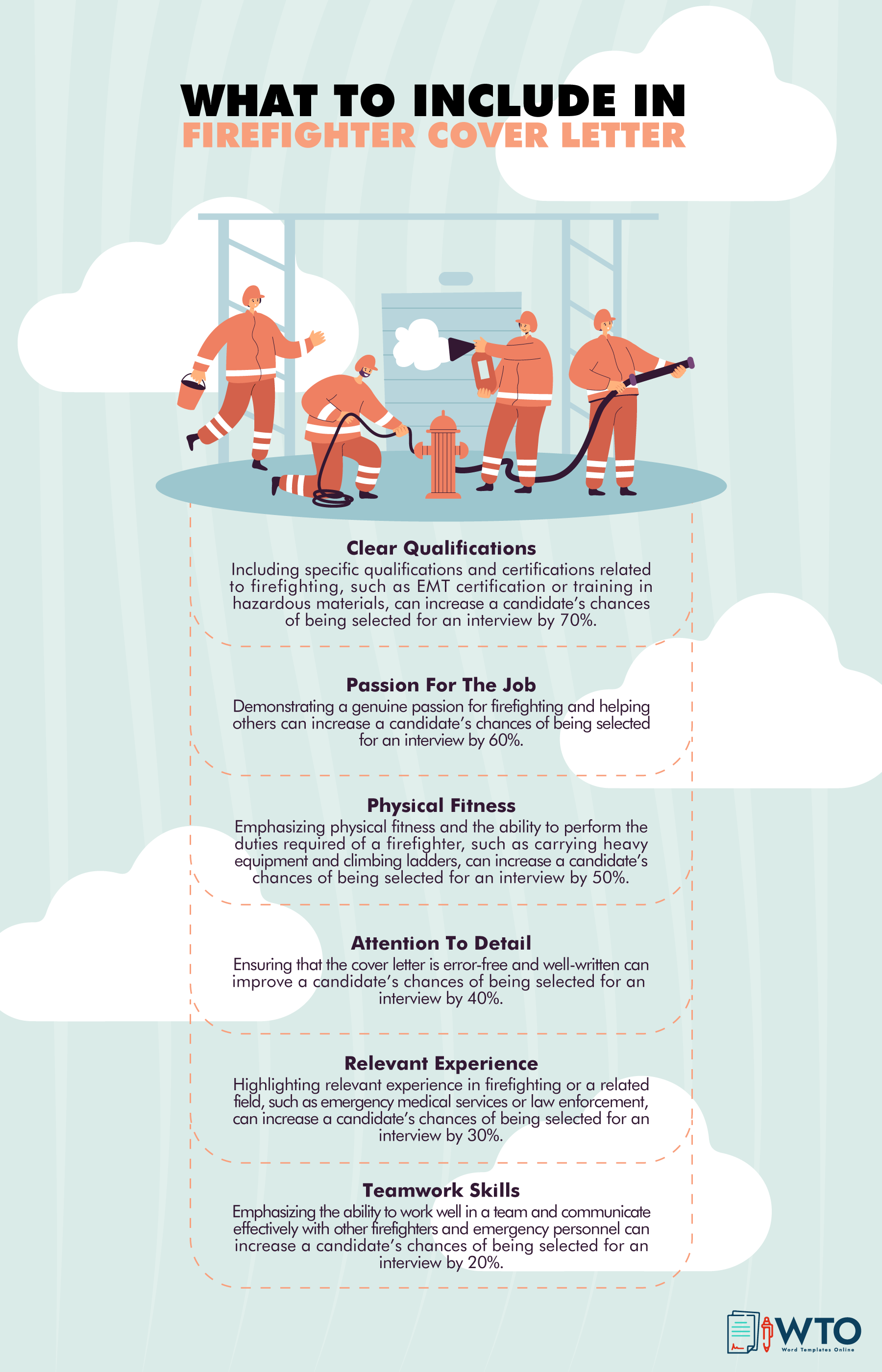
Firefighter skills
Firefighters play a multifaceted role in public safety, performing a wide range of tasks and responsibilities. These may include extinguishing fires and wildfires, rescuing injured individuals in emergencies, conducting safety inspections of buildings, and more. To excel in these diverse roles, a firefighter must possess a combination of hard and soft skills, which potential employers actively seek.
The following skills are commonly expected in a firefighter candidate:
Hard skills:
- Physical fitness and endurance
- First aid and emergency medical training
- Proficiency in using firefighting and rescue equipment
- Comprehension of public safety policies and procedures
- Understanding of building inspection codes and regulations
Soft skills:
- Leadership and ability to take charge in high-pressure situations
- Adaptability and flexibility in response to dynamic situations
- Problem-solving and critical thinking for efficient incident resolution
- Communication skills for effective interaction with team members and the public
- Teamwork and collaboration to achieve common goals
- Resilience and emotional stability in the face of adversity
- Interpersonal skills to build rapport with colleagues and the community
- Ability to work under pressure and manage stress
- Decision-making skills for prompt and appropriate actions
By demonstrating these hard and soft skills in your cover letter and resume, you can showcase your preparedness for the challenges of a firefighting career and increase your chances of being noticed by potential employers.
Make sure to provide examples of how you have applied these skills in your past experiences and how they align with the specific requirements of the firefighting role you are applying for.
How do I Format a Firefighter Cover Letter?
Writing it may seem daunting, but it does not have to be. If you follow the correct format and provide substantial information, you can craft a strong cover letter that persuades the recruiter to call you for an interview.
A standard cover letter for a firefighter will be formatted as follows:
A formal header
The first item you should include is a formal header. The traditional business header will include your name and contact details, as well as the recipient’s details (name, company name, and contact details). A date may as well be included.
tip for you
You should always aim to make it easy for the hiring manager to contact you. Including a valid phone number and email using an appealing but professional color is one way of making your contact information visible in the cover letter and resume.
Goal: A header serves different purposes. Firstly, it makes your cover letter visually distinguishable from the letters of the other candidates. Also, it simplifies the filing and retrieval of documents. Therefore, should it be misplaced, the recruiter can know where to file it. This lowers the chances of your letter being thrown out if it is found lying around in the office.
Therefore, a header is vital, especially for physical (hard copy) cover letters.
EXAMPLE
July 5, 2022
Michael Meyers
45 Lampkin Lane
Haddonfield, IL 3922
James Huntley
Hiring Manager,
The Fire and Medical Services Response Department of Chicago
23 Springfield Street
Chicago, IL 3922
Email address
Professional Greetings
A professional greeting will be structured as follows – Dear [Mr/Ms/Mrs] [Recipient’s last name] or Dear [full name]. It is also referred to as a salutation. It would be best to use a specific salutation; generic salutations do not add value to the cover letter for the firefighter position.
Tip for you
If you don’t know the recipient’s name, consider researching. You can always search it up on the company’s website, contact the company and make an inquiry, do an online search through platforms such as LinkedIn, check for contact details in the job posting, or find out if you’re selected for the role, who you’d be reporting to and address the letter to them.
Goal: Courtesy is a highly valued virtue in any profession. A professional greeting acts as a courtesy gesture and is used to create a connection with the recipient. It exudes a friendly but not too informal tone.
EXAMPLE
Dear Mr. Huntley or Dear James Huntley
Compelling introduction
You should always introduce your cover letter with a compelling statement. This essentially captures the interest of the reader. It is best to phrase your introduction with words that compel action or reaction from your reader. Typically, you should include a statement of your interest in the position.
Also, mention what you can bring to the table. This is an opportunity to let the hiring manager know “why” he should consider you as a candidate.
tip
You should include substantial information in the introduction. For example, you can mention experience, one or two skills, and a quantifiable achievement. Generic statements would not add value to the letter.
Goal: The introduction to it aims to capture the recruiter’s interest by highlighting your most substantial qualifications. This way, the recruiter gets motivated to read the rest of the letter.
EXAMPLE
I am from a family with an extensive history in firefighting. So, I have always admired and respected the profession since childhood. I’m glad I ended up as a firefighter, taking over from my father before me. I’ve been in the profession for five years now, and I would like to bring my expertise and enthusiasm for the profession to ‘The Fire and Medical Services Response Department of Chicago.
Middle paragraphs
This is the body of your cover letter. You can have 2 or 3 middle paragraphs in this section. Now that you’ve caught the recruiter’s attention in the introduction, you should retain it by providing an experience or two that illustrates the skills and requirements highlighted in the job description.
There are two approaches to tell an experience that effectively relays your qualifications – the STAR (situation, task, action, result) method and the CAR (context, action, result). Remember, firefighting is not limited to putting out fires; this profession requires a collaborative team effort, often involving 12-24 hour shifts alongside fellow firefighters. Therefore, most recruiters want to know how well you can collaborate with other firefighters.
tip
The cover letter is not a resume summary – it should enhance and complement it. Therefore, always review your resume and ensure you have not simply restated it in your letter. Instead, include different skills and experiences and expound on them. Repetition downgrades the quality of your letter.
Goal: This section helps the recruiter understand what you have done so far and how it aligns with the job requirements.
EXAMPLE
I currently serve as a firefighter in the Milwaukee Emergency Services Department, Wisconsin. In 2016, I graduated from Madison Area Technical College. Since graduating, I’ve been a devoted serviceman and have handled more than 100 emergency cases ranging from wildfires, building fires, landslides, severe storms, and flood accidents, among others.
I train and practice martial combat to remain physically fit and learn to practice calmness in tense situations, which has been very helpful when responding to chaotic events. My social skills have been integral to undertaking collaborative responses and communicating with residents when issuing instructions for rescue purposes.
In addition, I’ve received adequate EMT training and the necessary certifications (CPR certification and courses in physiology and anatomy). In 2020, I was part of the team that responded to the 1-hour Tornado in Washburn County. That was an experience that tested our team’s resilience and competency. We were, however, ready. Through commitment, critical thinking, and the use of our training, we responded to the catastrophe and mitigated the number of potential victims from a likely 5000 to 1200 through evacuations.
Throughout my career, I received two honorary awards – a humanitarian award from the mayor of Milwaukee in 2019 for off-duty services and the Serviceman of the Year Award from the ERS (Emergency Response Services) Department in 2020. I’m confident I’d deliver high-level emergency response services to the community of Chicago.
Conclusion and signoff
The last thing is to wrap up your cover letter. Now that you have made your case as to why you are a suitable firefighter, end the letter on a high note. You can include a call to action asking for an interview (the objective of the cover letter). Let the recruiter know you are enthusiastic about the opportunity to work for them and provide them with contact details they can use to reach out to you. Then, add a complimentary closing and your signature.
tip
Always suggest the next course of action, which can be anything from an interview to a follow-up or inviting them to reach out.
Goal: The closing is meant to end the letter on a positive note, just as you started. Also, it outlines an expectation you may have in the process.
EXAMPLE
Joining the brave servicemen and women at the Chicago Emergency Services Team would be an honor. Allow me to suggest an interview to answer any further questions you may have regarding my application.
Regards,
Michael Meyers
Sample of Firefighter Cover Letter
Providing a valuable resource for aspiring firefighters, this section presents a sample cover letter, serving as a mentor text to assist readers in articulating their qualifications and passion effectively.
Sample
Dear Sergeant Chris Bird,
I am writing to express my strong interest in the firefighter position at the Chicago Fire and Medical Services Response Department. Coming from a family with a deep-rooted history in firefighting, my admiration and respect for this noble profession have only grown with time. I am proud to have followed in my father’s footsteps and now, with five years of experience under my belt, I am eager to bring my expertise and enthusiasm to your esteemed department.
Currently serving with the Milwaukee Emergency Services Department in Wisconsin, my journey began after graduating from Madison Area Technical College in 2016. Over the years, I have been actively involved in over 100 emergency situations, including wildfires, building fires, landslides, severe storms, and flood incidents. My dedication to physical fitness and mental resilience fostered through martial combat training has been instrumental in maintaining calm and efficiency during chaotic situations. My strong social skills have further aided me in collaborative efforts and effective communication with residents during rescue operations.
I hold EMT training certifications, including CPR, and have completed courses in physiology and anatomy. A notable highlight of my career was my involvement in the response team during the 1-hour Tornado in Washburn County in 2020. Our team’s commitment, critical thinking, and training were crucial in reducing the number of potential victims from 5000 to 1200 through prompt evacuations. My efforts have been recognized with a Humanitarian Award from the Mayor of Milwaukee in 2019 and the Serviceman of the Year Award from the ERS Department in 2020.
I am confident that my experience, training, and dedication to emergency response make me a suitable candidate for the position at your department. I am excited about the prospect of joining the team of brave servicemen and women in Chicago and contributing to the safety and well-being of the community.
I would be honored to discuss my application in more detail and am available for an interview at your earliest convenience. Thank you for considering my application. I look forward to the opportunity to contribute to the Chicago Emergency Services Team.
Regards,
Lloyd Kane
Analysis
The sample cover letter provided is a useful instructional sample for writing effective cover letters, especially for positions in emergency services or related fields. It exhibits several key elements that serve as a blueprint for others crafting similar letters.
Firstly, the letter opens with a personal connection to the firefighting profession, referencing the writer’s family history in the field. This personal touch is not just engaging but also establishes the writer’s deep-rooted motivation and dedication to the profession. It’s an effective strategy to create an immediate connection with the reader and set the tone for the rest of the letter.
Secondly, the writer skillfully outlines relevant professional experiences and achievements, which is crucial in illustrating competency for the role. The detailed recounting of specific incidents, along with the number of emergencies handled, showcases the writer’s hands-on experience and capability to handle high-stress scenarios. Additionally, mentioning awards and recognitions like the Humanitarian Award and Serviceman of the Year Award further bolsters the writer’s credentials, providing tangible proof of his skills and dedication.
Moreover, the letter emphasizes the applicant’s relevant skills and training, including EMT certifications and knowledge in physiology and anatomy. This detailed listing of qualifications is vital in assuring the employer of the applicant’s preparedness for the specific demands of the firefighting job.
Importantly, the applicant extends beyond just listing experiences and qualifications. He demonstrates key competencies essential for the role, such as physical fitness, mental resilience, and strong social skills. This holistic presentation of his capabilities makes him a more rounded and appealing candidate for the position.
The letter is also notable for its professional structure and clarity. It flows logically, moving from personal motivation to professional experiences and skills, and concludes with the applicant’s eagerness to contribute to the new role. This coherent structure, coupled with concise and clear language, ensures that the reader can easily follow and appreciate the applicant’s profile.
Lastly, the letter concludes with a proactive call to action, expressing eagerness for an interview, and a courteous note of thanks. This not only shows the writer’s professionalism but also his polite and respectful approach, which is important in any job application.
In conclusion, this cover letter serves as an excellent guide for anyone looking to write an impactful and effective cover letter. Its blend of personal storytelling, detailed professional achievements, clear demonstration of relevant skills, professional formatting, and respectful closing makes it a comprehensive template for job applicants, particularly in fields where personal dedication and professional expertise are equally valued.
Do’s and Don’ts
Different writing techniques can be explored to enhance the quality of this cover letter. Below are some things you should do and not do when crafting it:
The do’s include the following:
- Emphasize your ability to work under pressure: You will work under intense pressure as a firefighter in very stressful conditions and circumstances. Therefore, mentioning how you manage to work under pressure, make appropriate and needed decisions and meet tight deadlines is suitable for your letter.
- Consult examples before writing: You must consult examples and research to determine how to structure the entire document. However, do not copy information from these examples; instead, be original and write a letter that reflects you and your qualifications.
- Stay focused: Be objective. Mention the most relevant qualifications as soon as possible. This keeps the recruiter interested. Remember, they often have little time to read multiple letters, so make it worth their time.
- Keep it brief: Ideally, this letter should be a page long. However, recruiters are not stringent on that, and you can include an additional page if necessary. However, make sure the information on the additional page is necessary. The letter shouldn’t exceed two pages.
- Do proofread: Proofread your letter once or twice before passing it on. You can also have someone else review it and highlight areas that need to be reviewed. This allows you to correct any mistakes. It also helps you stay focused and organized before submitting.
The don’ts include the following:
- Repeating your resume: Do not mention everything you mentioned in the resume. Instead, mention one or two achievements and explain how they illustrate your competencies and suitability for the position. Repeating your resume devalues both documents.
- Using generic cover letters: Some candidates mention qualifications such as they are good team players – it’s generic and not project-specific. However, you must match the qualifications to the specific job requirements. Therefore, always customize the letter for each application. This indicates that you reviewed the job posting and shows you understand the issues associated with the respective municipality or county.
- Getting casual while writing: Firefighting is a respectable profession; thus, you don’t want to appear unprofessional in your cover letter. However, as much as you want to appear friendlier, it never reflects well on you. Written communication is a professional medium; use it to its full potential.
- Filling out every white space: White spaces make your letter more legible and visually appealing. Therefore, do not aim to fill out each white space on your letter. Likewise, do not use fragile margins or try not to use paragraphs that are too long (not more than five lines).
- Inconsistency among cover letters and resumes: The cover letter and resume should have some level of consistency in visual style. This makes your application seem more professional and organized. It also makes your document easily distinguishable from those of other applicants. For example, the font you use for both documents should be similar, easy to read, and straightforward.
Wrapping Up
A cover letter for a firefighter is one of the essential tools in your job search. It is your first line of communication with the recruiter and outlines how well you know their job requirements. Therefore, it should be customized to match the requirements. The guide provided in this article covers various aspects of writing it, from planning and drafting to proofreading and submission. In addition, it explains how you can develop an exceptional cover letter that scores you an interview, planning and drafting to proofreading and submission. In addition, it explains how you can develop an exceptional firefighter cover letter that scores you an interview.









